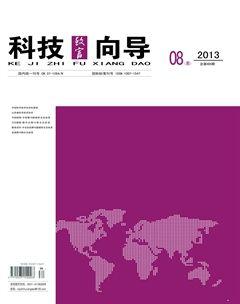The impacts of China-ASEAN Free Trade Area
Nguyen Le Duy
【Abstract】There is little doubt that China-ASEAN Free Trade Area (CAFTA) is important to ASEAN. As a rapidly growing economy, China offers enormous potential for the largely small and export-oriented ASEAN member countries. China's importance is even more evident at present with a fragile and uncertain global economic recovery and grave economic difficulties faced by the industrial world on which ASEAN countries rely heavily. Through closer integration within the region and with China, CAFTA helps small ASEAN countries pool resources and combine markets. Needless to say, China's increasing integration with the world trading system also presents tremendous competitive pressure on its smaller neighbors. For ASEAN, instituting a more inclusive CAFTA, which covers trade in goods and services as well as investment activities, is essential for forging a comprehensive economic partnership with China and enabling a deeper economic integration in the long run.
【Key words】China;ASEAN;Free Trade Area;Economic integration
In 2008,China was only ASEAN's third-largest trading partner. Their trade value reaching US$192 billion,accounting for only 11 per cent of ASEAN's total foreign trade.
The China and ASEAN Free Trade Area, or CAFTA,came into effect in January 2010.A year after its full implementation,China surpassed Japan and the European Union for the first time,becoming ASEAN's biggest trading partner.Sino-ASEAN trade reached US$292.8 billion in 2010,up 37.5 per cent year-on-year.In 2011,China-ASEAN bilateral trade surpassed the expected result of US$350 billion.Last year trade between China and ASEAN reached a record high of US$400.9 billion last year,according to the China-ASEAN Business Council Chinese Secretariat. As the world's third largest regional free trade area,after European Union(EU) and North America Free Trade Area(NAFTA), CAFTA has and will continue to have significant trade and development implications for Southeast Asia and beyond.
However,as the world economy has been hard hit by the crisis, both China and ASEAN are facing new challenges and difficulties.As China often serves as the last point in the production chain and intra-ASEAN trade forms a broader regional production network,a sharp drop in China's export could be quickly translated into import declines,including those from ASEAN.In part,this is due to the fact that consumer markets in the region are still under-developed while China and many ASEAN members continue to compete in exports to advanced countries,such as the US and the EU.With the exception of China and Singapore,competitive,rather than complementary,structures of China and ASEAN prevent significant growth in trade.Thus China's export-oriented development strategies have cast a large shadow on ASEAN economies.
With CAFTA in force,export-orientated ASEAN countries may need to continue coping with the risk of trade diversion and related structural adjustments.After the initial process of adjustment,individual ASEAN economies will then develop their own niches in their economic relations with China.First,ASEAN will have to further improve its economic competitiveness and regional integration.In the short run,some ASEAN countries may face severe competition from cheaper Chinese goods, especially electronics,footwear,apparels and textiles.ASEAN's newer members,who should be phased into the ASEAN Free Trade Area by 2015,may find it particularly challenging to reduce tariffs due to their reliance on custom tariffs.Moreover,due to considerable differences among ASEAN members in development and in resource endowment,different ASEAN countries face different opportunities and challenges.Indonesia, Malaysia,the Philippines and Thailand, which are rich in natural resources,had exported mainly primary products to China in the early 1990s.By the mid-2000s, though, information and communication technology (ICT) goods comprised the majority of their exports.The complementarities between China and the more developed members in ASEAN have also deepened, underlying rapid rise in trade of machinery and equipment.For example,export of electrical machinery and apparatus accounted for 54% of Malaysia's export to China in 2012,and likewise, electronic equipment and parts plus machinery appliances accounted for 45% of Malaysia's import from China.
Over the long run,however,product and process innovations in ASEAN are constrained by the size of the economies and limited R&D; spending of less than 0.5% of GDP with the exception of Singapore. Meanwhile, ongoing upgrades in technological and business training and incubation have become even more pressing in,and challenging to, the less developed regional economies.Typically,their resources-based and labor-intensive exports are subject to stiffer competition in both the global and Chinese markets.As a close neighbor and a large regional power,China is now even more indispensable to ASEAN than in the past. With CAFTA,individual ASEAN countries,regardless of their size and level of development, are able to engage China as an equal party to enjoy mutual benefits.On the international arena,CAFTA also increases ASEAN's standing.
As CAFTA also facilitates trade and investment within and outside the region,countries like Malaysia has already been wooing Chinese investments for projects in Malaysia;on China's part,investing in Malaysia with its natural resources and raw materials is a win-win arrangement. Although some remain skeptical about the implementation of CAFTA and its impact on trade and industries in ASEAN countries,many ASEAN countries have been adjusting their economic structures and activities to remain competitive, and also to complement the Chinese economy. On the other hand, China's economy has also undergone rapid transformation as it develops.As a large economy,it is increasingly connected to this region. In the short term,China will need various products from ASEAN, including wood,iron ore,rubber and numerous kinds of tropical fruits to boost its economy.In the long term,in its effort to balance its economy and to develop its consumer markets,China has the potential of becoming a major export market for ASEAN for not only resource products but also manufactured goods.

